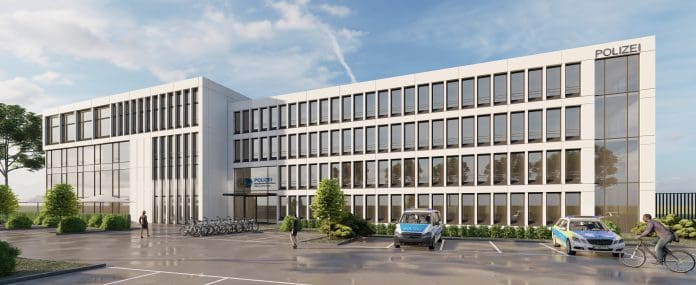Those who embrace Building Information Modelling (BIM) can design and build faster, cheaper, with higher quality and more smoothly. However, the transition is definitely a challenge. The contractor Tecklenburg shows how it can be done successfully
The advantages of Building Information Modelling for the construction industry are well known.
However, many construction companies are reluctant to take the step of introducing BIM in full because it ultimately affects all processes in their own company and represents a major transformation.
Yet now is the right time to build on such a transformation: the boom in the construction industry of the last few years is over, the public sector is mandatorily demanding BIM when awarding large contracts, and cost pressure will continue to rise.
Those who have mastered BIM will find it easier to obtain coveted contracts, work more quickly and generate profits sooner.
Tecklenburg’s radical step towards BIM
Tecklenburg, a construction company founded in 1878, has dared to transform. The Tecklenburg Group is an investor, project developer and general contractor in construction projects.
In addition to managing director Hermann Tecklenburg, the Tecklenburg Group’s shareholders include Martina Voss-Tecklenburg, the current national women’s soccer team coach.
Although the company had no BIM experience, it was determined to win the contract for constructing the Rhein-Erft district police station in Bergheim.
However, the tender conditions included the mandatory use of Building Information Modelling for the entire construction project. For this reason, the management decided to build up the necessary expertise and initiate the transformation to model-based planning.
A successful transition
The greatest challenge for the introduction was to involve and motivate 140 employees from 20 nations to get involved with the innovations.
The first step was for the management to develop a key user concept with all department heads in a steering committee. This included appointing an employee in each department below the management level as the BIM officer responsible for implementing BIM.
In the second step, the steering committee developed a strategy. This included the definition of specific software solutions and interface definitions. The key users underwent intensive BIM training before driving implementation forward in their departments. It was also determined who would take on which tasks, competencies and responsibilities, present results, and be approved.
There was a separate BIM department for project management of the BIM introduction.
This included project managers as the controlling authority, a board of directors for strategic corporate development (who, among other things, determined which department would be transformed when and how), quality management, a commercial project controller, a BIM architect, designers and structural engineers, and a site manager.
Despite the prudent and structurally consistent approach to introducing BIM, there was also resistance to overcome among the workforce. But the advantages outweighed them: BIM has made the work of the departments much more transparent and significantly more interlinked. It is no longer the case that an architect makes his or her plans, then passes them on and is no longer involved afterwards. Now, he or she can see later what the project’s cost has revealed and what changes are necessary.
Advantages for the complete building lifecycle
For Tecklenburg, the step was worthwhile: 60% of the entire planning for the new police station of the Rhine-Erft district could be completed with Allplan, significantly reducing costs and time. BIM was used in all project phases: architecture, physics, structural design, precast plants, building technology, costing, construction and facility management.
“Thanks to the strategically and conceptually mature approach and the use of Nemetschek’s professional BIM tools, we were able to hand over the newly constructed building to the district police authority on time.”
Tecklenburg relies on Solibri for clash detection, compatibility checks and collision detection. These quality assurance measures resulted in significant cost savings because they avoided supplements, construction delays and unnecessary consumption of resources. As a result, Tecklenburg found and resolved 7,800 collisions during the planning phase – before they led to costly delays on the construction site.
Our client very much appreciated being transparently informed about the status and the next steps at all times.”
Alexander Siegmund
Senior Manager Digital Media
Nemetschek Group
*Please note: This is a commercial profile

















